Kenyan Traditional Vessels
Vessels are objects fabricated from a wide variety of materials and have, in the past, been used to store liquids such as water, beer, milk and honey, as well as food, feathers and fat. From as far back as our ancestors can recall to date, there are still some Kenyan communities that use vessels for the mentioned purposes, but in several urban locations, they are used as interior décor.
Below we feature a selection of vessels from different Kenyan communities:
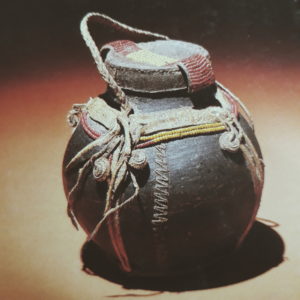
A 24cm fat container attributed to the Turkana. The vessel is made through the fibre stitching of wood, leather and glass beads. This was a vessel common in the cooking area of the homestead.
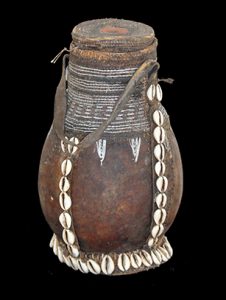
Sotocho (Borana)
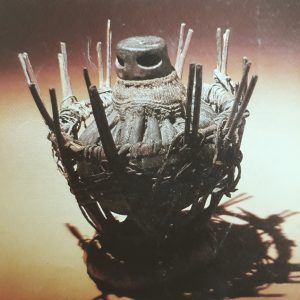
Gabbra
The Borana and Gabbra communities use these vessels as liquid containers. Created from camel hide, fibre and wood, its makers were careful to keep holes at the top of the vessel to ensure the content inside was secure during travel on camels and donkeys.
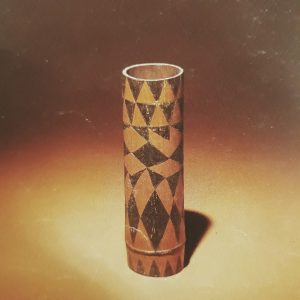
This is a tegan, a milk collecting vessel among the Meru. At 30cm, this historical artefact is made simply from bamboo. The community went an extra mile to display their craftmanship by burning or incising geometrical patterns on the vessel’s exterior.
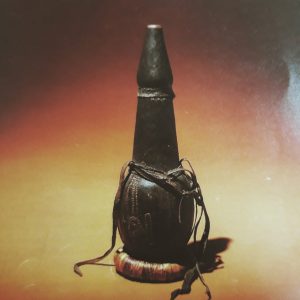
A liquid container 61cm in height attributed to the Samburu. This vessel was designed to cater to the pastoralist community that’s known to travel a lot, therefore, the top serves as a goblet. It is made from metal, leather, wood and fibre.
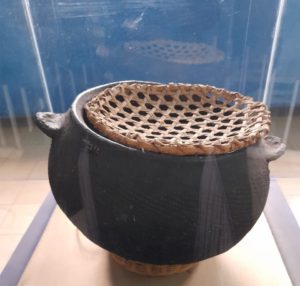
After the Luo community settled around Lake Victoria and took up fishing as an occupation, fish became an integral part of their diet. Preparation of this delicacy was done using ohigla and ndhwaro. Ohigla was a cooking pot, while ndhwaro was a flat woven tray. Ohigla was made using dried leaves from a maize plant. The leaves were assembled into a bowl which was smeared with cow dung to seal the pot. Ndhwaro is a flat pot tray woven made using doum palm fiber. It was placed inside the pot to prevent fish from sticking to the base of the pot during cooking.
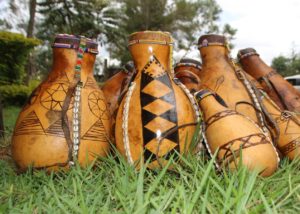
Image Credit: Uasin Gishu County Government
Mursik is a traditional Kalenjin beverage that is made by fermenting cow milk. This drink is prepared and seved in a gourd known as sotet. When stored in a cool place, the sotet maintained a constant internal temperature that allowed the fermentation process to take place. Sotet was made from the hard shell of a gourd fruit which was hollowed out and left to dry. The lid and handles were made using leather and were decorated using colourful beads or cowrie shells.
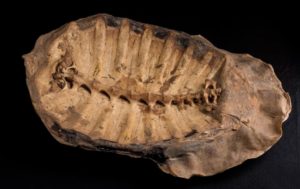
Image Credit: Google Arts and Culture
The El Molo is one of the smallest communities in Kenya and lives on the shores of Lake Turkana. Members of this community were sustained by hunting animals such as hippopotamus, crocodiles and turtles from the lake. Once consumed, the skin and bones were used to make bags and other items. As for the turtles, their shells were used to make a plate called bogotei that was used for individual servings of food.
In 1977, the Kenyan government imposed a ban on all forms of wildlife hunting. The ban, which still stands to date, also states that only non-consumptive uses of wildlife may be exercised in Kenya. The making of bogotei is therefore illegal, and this artefact is now a relic that reminds us of a traditional way of life.
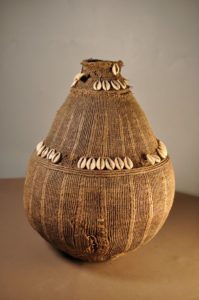
Image sourced from catawiki
The Somali devised an ingenious way of storing water inside woven baskets. These baskets were called han and were made from the roots of a special tree. Once these roots were harvested, they were boiled then woven into baskets. To solve the inevitable leakage issue, the basket was made watertight by repeatedly smoking it using burning wood of yet another tree called korasum. The smoke this tree produces is heavy and becomes sticky when it coats any substance. This repetitive motion sealed the inside of the container.

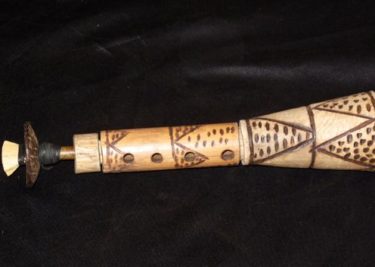
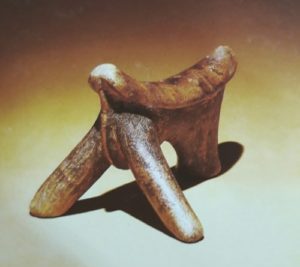
2 Comments
You are a good with the artefacts keep up
Asante sana!